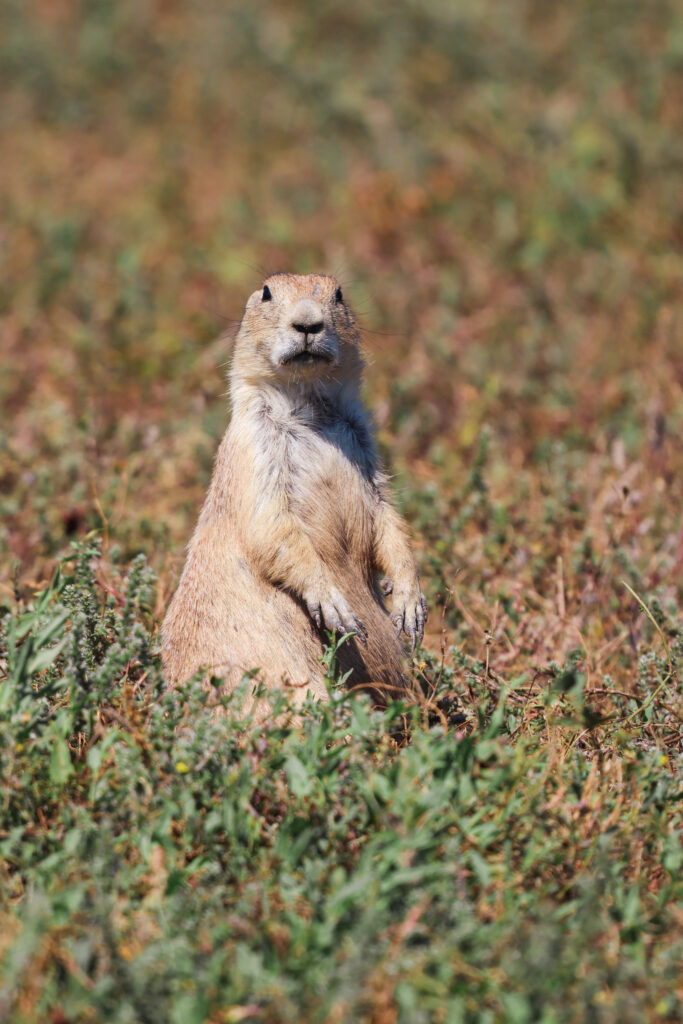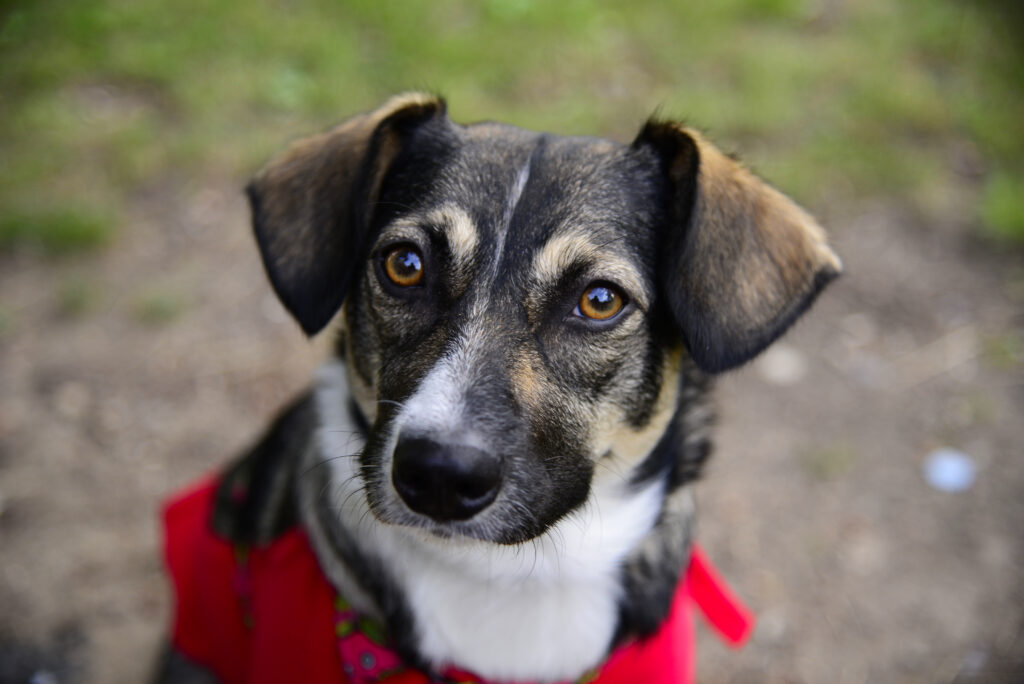Are you looking to add a furry friend to your family, but unsure which breed is the right fit for you? Look no further! “Exploring The Best Medium Sized Dog Breeds: A Comprehensive Guide” is here to help you navigate the world of medium sized dogs. From their temperament and exercise needs to grooming requirements and health considerations, this guide will provide you with all the information you need to make an informed decision. So sit back, relax, and let’s embark on this exciting journey together as we explore the top medium sized dog breeds!

Understanding Medium-Sized Dogs
Medium-sized dogs are a popular choice for many families and individuals. They offer a great balance between the small and large dog breeds, providing the perfect blend of energy, companionship, and manageability. In this comprehensive guide, we will explore the defining traits of medium-sized dogs, discuss the pros and cons of owning one, and provide a list of the top 10 best medium-sized dog breeds to help you make an informed decision when choosing your new four-legged companion.
Defining Medium-Sized Dogs
When it comes to defining medium-sized dogs, there isn’t a precise measurement that categorizes a dog as such. However, a general guideline is to consider dogs that weigh between 20 and 50 pounds as medium-sized. Of course, there can be some variation within this range, with some breeds leaning towards the smaller end and others leaning towards the larger end. It’s important to note that size alone should not be the only factor when determining if a certain breed is suitable for you, as other characteristics play a significant role as well.
Common Traits of Medium-Sized Dogs
Medium-sized dogs share several common traits that make them appealing to a wide range of dog lovers. One of the most notable traits is their versatility. Medium-sized dogs are often well-suited for different types of living environments, whether it’s a spacious house with a yard or a cozy apartment. They tend to possess a moderate energy level, making them adaptable to different activity levels and lifestyles.
Another characteristic of medium-sized dogs is their sociability and friendliness. Many breeds in this category are known for their affectionate nature and their ability to get along well with both individuals and other animals. These dogs often thrive when included in family activities and are excellent companions for children, making them a great choice for families with kids.
Pros and Cons of Medium-Sized Dogs
Like any other type of dog, medium-sized dogs come with both pros and cons that must be considered before bringing one into your life. Some advantages of choosing a medium-sized dog include their manageability, as they are generally easier to handle than large breeds. They can also fit comfortably in most homes and vehicles, which can be a significant factor for individuals with limited space or those who frequently travel with their dogs.
Medium-sized dogs also tend to have longer lifespans compared to larger breeds. This means that you will have more time to create lasting memories and build a strong bond with your canine companion. Additionally, medium-sized dogs often have fewer health issues than both small and large breeds, reducing potential medical expenses and ensuring a healthier overall lifestyle for your pet.
On the other hand, some challenges that come with owning a medium-sized dog are their moderate exercise requirements. While they are generally more active than small breeds, they may not require as much physical activity as larger breeds. This means that you must strike a balance between providing them with enough exercise to keep them healthy and avoiding overexertion.
Another consideration is their shedding and grooming needs. Medium-sized dogs can vary in their maintenance requirements, with some breeds requiring frequent grooming and shedding more than others. It’s essential to research the specific breed you are interested in to understand the level of grooming commitment required.
Factors to Consider when Choosing a Medium-Sized Dog Breed
Now that you have a better understanding of medium-sized dogs in general, it’s essential to consider various factors that will help you determine the right breed for you. By evaluating your lifestyle, living arrangements, family situation, and personal preferences, you will be better equipped to choose a medium-sized dog that fits perfectly into your life.
Lifestyle and Activity Level
Consider your lifestyle and activity level when choosing a medium-sized dog breed. Are you an active individual who enjoys outdoor activities and has plenty of time to devote to exercise? Or do you have a more relaxed lifestyle and prefer a dog that is content with short walks and indoor play? It’s crucial to choose a breed that matches your energy level and can thrive in your daily routine.
Space and Living Arrangements
Evaluate your living arrangements and available space before bringing a medium-sized dog into your home. If you live in an apartment or have limited outdoor space, some breeds may be more suitable than others. Certain breeds are known to be more adaptable to smaller living areas, while others require more room to roam and explore.
Family and Children
If you have a family, especially with young children, it’s vital to choose a medium-sized dog breed that is known for its compatibility with kids. Some breeds are naturally gentle and patient with children, while others may be more reserved or less tolerant. Research different breeds’ temperaments and consult with breeders or animal shelters to find a dog that will be a perfect match for your family dynamics.
Allergies and Shedding
Consider any allergies or sensitivities within your household when choosing a medium-sized dog breed. While no dog breed is entirely hypoallergenic, certain breeds are known to produce fewer allergenic substances and shed less hair, making them a better choice for individuals with allergies. If allergies are a concern, look for breeds with hair instead of fur or breeds that have a reputation for being hypoallergenic.
Training and Maintenance
Different medium-sized dog breeds require varying levels of training and maintenance. Some breeds are naturally obedient and easy to train, while others may be more independent or stubborn. Additionally, grooming needs can vary greatly between breeds, with some requiring regular brushing and grooming, while others have a more low-maintenance coat. Consider the time and effort you are willing to invest in training and grooming before making your decision.
Now that we have explored the essential factors to consider when choosing a medium-sized dog breed, let’s dive into our list of the top 10 best medium-sized dog breeds, in no particular order.

Top 10 Best Medium-Sized Dog Breeds
- Labrador Retriever
- Bulldog
- Boxer
- Australian Shepherd
- Cocker Spaniel
- Vizsla
- Border Collie
- Siberian Husky
- Beagle
- Dalmatian
In the following sections, we will provide an overview of each breed, including their temperament, physical characteristics, exercise needs, grooming requirements, and the pros and cons of owning them.
1. Labrador Retriever
Breed Overview
Labrador Retrievers, often called Labs, are one of the most popular medium-sized dog breeds. They are known for their friendly and outgoing nature, making them excellent family pets. Originally bred as hunting companions, Labs are intelligent and versatile dogs.
Temperament and Personality
Labs are known for their gentle and affectionate disposition. They are friendly towards both people and other animals, making them an excellent choice for families with children or other pets. Labs are highly trainable and eager to please, which makes them well-suited for various activities such as obedience training, retrieving games, and even therapy work.
Physical Characteristics
Labrador Retrievers are muscular dogs with a dense double coat that can come in various colors, including yellow, black, and chocolate. They have a friendly expression with kind, intelligent eyes. Labs typically weigh between 55 and 80 pounds and stand approximately 21 to 24 inches tall at the shoulder.
Training and Exercise Needs
Due to their high intelligence and energy level, Labs require regular mental and physical exercise to stay happy and healthy. They excel in activities such as obedience training, agility, and retrieving games. Labs are natural swimmers and often enjoy water activities. Regular exercise is essential to prevent them from becoming bored or developing destructive behaviors.
Grooming Requirements
Labrador Retrievers have a short, dense coat that is relatively low maintenance. Regular brushing is recommended to keep their coat healthy and to minimize shedding. Labs are known to shed moderately, especially during seasonal coat changes. Additionally, regular dental care, nail trims, and ear cleaning are vital for their overall hygiene.
Pros and Cons
Some advantages of owning a Labrador Retriever include their friendly and outgoing nature, their suitability for families and children, and their versatility in various activities. Labs are intelligent and trainable, making them a joy to work with during obedience training and other forms of mental stimulation.
On the downside, Labs have a high energy level that requires regular exercise to prevent boredom and destructive behaviors. They can shed moderately, which may require additional grooming and cleaning efforts. Additionally, Labs are prone to weight gain and obesity, so their diet and exercise routine must be carefully monitored to ensure a healthy weight.

2. Bulldog
Breed Overview
Bulldogs, also known as English Bulldogs, are medium-sized dogs with a distinct appearance. With their wrinkled face, broad chest, and distinctive gait, Bulldogs have become beloved pets around the world. Despite their imposing look, Bulldogs are known for their gentle and friendly nature.
Temperament and Personality
Bulldogs are known for their calm and docile temperament. They are generally friendly, patient, and affectionate, making them excellent companions for families, including those with children. Bulldogs are also known for their loyalty and protective instincts, which can make them good watchdogs.
Physical Characteristics
Bulldogs have a muscular and compact build, with a distinctive wrinkled face and a pushed-in nose. They typically weigh between 40 and 50 pounds and stand around 14 to 15 inches tall at the shoulder. Bulldogs come in various colors, including brindle, fawn, and white with patches.
Training and Exercise Needs
While Bulldogs are not known for their high activity level, they still require regular exercise to maintain a healthy weight and prevent health issues. Short walks and playtime in a secure area are usually sufficient for their exercise needs. Bulldogs are generally easy to train, but they can be stubborn at times, so consistent and patient training methods are recommended.
Grooming Requirements
Bulldogs have a short, smooth coat that is relatively low maintenance. Regular brushing helps to keep their coat clean and reduces shedding. Due to their facial folds, Bulldogs require attentive cleaning to prevent skin infections and irritations. Additionally, regular dental care, nail trims, and ear cleaning are essential for their overall well-being.
Pros and Cons
One of the advantages of owning a Bulldog is their gentle and friendly temperament, which makes them suitable for families and households with children. Bulldogs are generally low-energy dogs, making them a good fit for individuals with a more laid-back lifestyle. Additionally, they are known for their loyalty and protective instincts, which can provide a sense of security.
On the downside, Bulldogs are prone to certain health issues, including respiratory problems due to their brachycephalic (short-nosed) face, and joint problems due to their stocky build. Regular veterinary care and monitoring are necessary to ensure their well-being. Bulldogs can also drool and snore, which may be a consideration for some families.
3. Boxer
Breed Overview
Boxers are medium-sized dogs known for their athleticism, loyalty, and playful nature. Originally bred in Germany as hunting dogs, Boxers have become popular family pets and are well-regarded for their protective instincts.
Temperament and Personality
Boxers are known for their high-energy and fun-loving personality. They are generally friendly, patient, and affectionate, making them great companions for families, including those with children. Boxers are also known for their loyalty and protective nature, which can make them excellent watchdogs.
Physical Characteristics
Boxers have a muscular and athletic build, with a square-shaped head and a strong jaw. They typically weigh between 50 and 70 pounds and stand around 21 to 25 inches tall at the shoulder. Boxers have a short coat that comes in various colors, including fawn, brindle, and white markings.
Training and Exercise Needs
Boxers are intelligent and eager to please, which makes them highly trainable. They thrive on mental stimulation and regular exercise, so providing them with outlets for their energy is essential. Daily walks, playtime, and interactive toys can help meet their exercise needs. Boxers may also excel in activities such as obedience training, agility, and even dog sports.
Grooming Requirements
Boxers have a short coat that is relatively low maintenance. Regular brushing will help to keep their coat clean and minimize shedding. While they are not heavy shedders, they do shed moderately throughout the year. Boxers are prone to certain skin allergies, so regular grooming and skincare are essential for their overall well-being.
Pros and Cons
One of the advantages of owning a Boxer is their fun-loving and energetic personality, which makes them excellent companions for active individuals and families. Boxers are known for their loyalty and protective instincts, which can provide a sense of security. They are also highly trainable, making them a joy to work with during obedience training and other forms of mental stimulation.
On the downside, Boxers have a high energy level that requires regular exercise and mental stimulation to prevent boredom and destructive behaviors. They can be prone to separation anxiety if left alone for long periods, so they are best suited to families or individuals who can provide them with ample companionship. Additionally, their short coat may not provide adequate protection in extreme weather conditions, so precautions should be taken during hot and cold seasons.